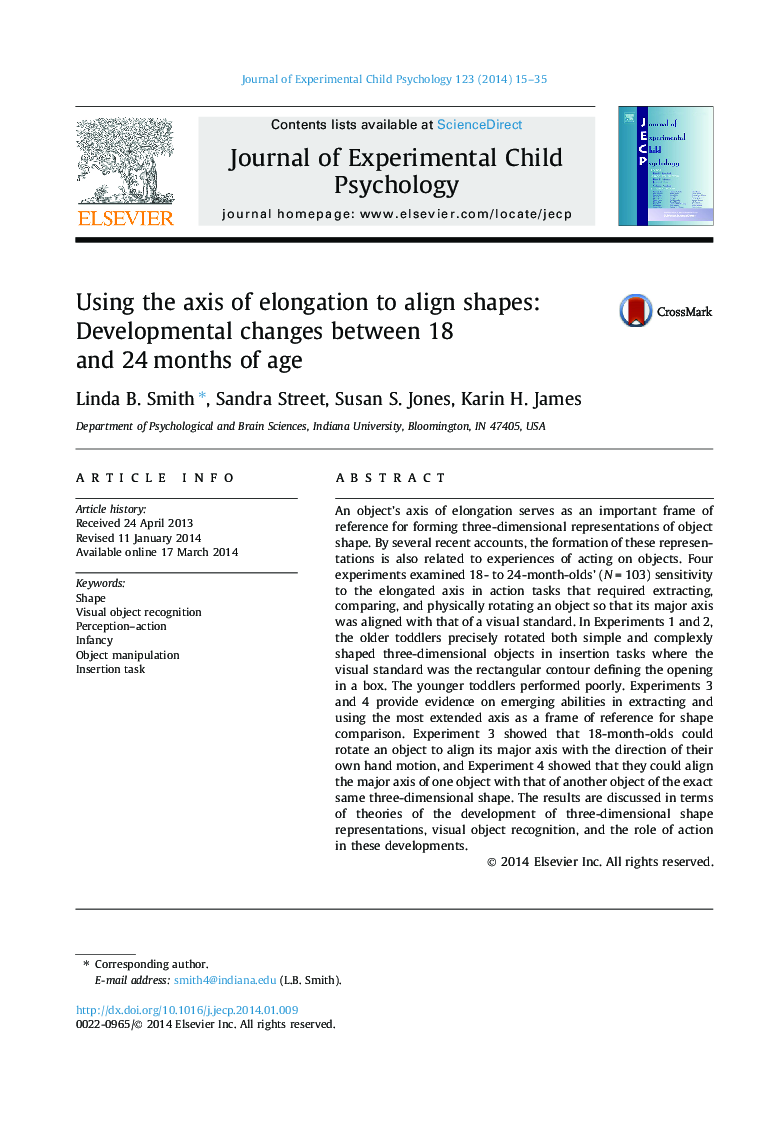| Article ID | Journal | Published Year | Pages | File Type |
|---|---|---|---|---|
| 7275499 | Journal of Experimental Child Psychology | 2014 | 21 Pages |
Abstract
An object's axis of elongation serves as an important frame of reference for forming three-dimensional representations of object shape. By several recent accounts, the formation of these representations is also related to experiences of acting on objects. Four experiments examined 18- to 24-month-olds' (NÂ =Â 103) sensitivity to the elongated axis in action tasks that required extracting, comparing, and physically rotating an object so that its major axis was aligned with that of a visual standard. In Experiments 1 and 2, the older toddlers precisely rotated both simple and complexly shaped three-dimensional objects in insertion tasks where the visual standard was the rectangular contour defining the opening in a box. The younger toddlers performed poorly. Experiments 3 and 4 provide evidence on emerging abilities in extracting and using the most extended axis as a frame of reference for shape comparison. Experiment 3 showed that 18-month-olds could rotate an object to align its major axis with the direction of their own hand motion, and Experiment 4 showed that they could align the major axis of one object with that of another object of the exact same three-dimensional shape. The results are discussed in terms of theories of the development of three-dimensional shape representations, visual object recognition, and the role of action in these developments.
Related Topics
Social Sciences and Humanities
Psychology
Developmental and Educational Psychology
Authors
Linda B. Smith, Sandra Street, Susan S. Jones, Karin H. James,
